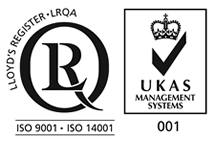
Main Products
Copyright 1998-2025 Firmetal Group All Rights Reserved. | Sitemap
Methods and equipment for the production of niobium and/or tantalum powder; The method is carried out by reducing alkali metal fluobiobium and/or tantalate, wherein the reduction reaction temperature is 300-1050℃, and the reducing agent selected from alkali metal plus at least one halide selected from Mg, Ca, Sr, Ba, Li, Ce reacts with the alkali metal fluobiobium and/or tantalate to obtain niobium and/or tantalum powder; When niobium powder and tantalum powder are prepared according to the method of the invention, the reduction recovery rate is high, the obtained niobium powder and tantalum powder have large specific surface area, large porosity and low oxygen content, and have the characteristics of large open porosity, low leakage current and high specific volume when they are used to make capacitor anode. The invention facilitates industrial production.
Niobium and tantalum, which are called valve metals, have similar properties and can be used to make the anode of electrolytic capacitors, that is, niobium wire or tantalum wire is buried in niobium powder or tantalum powder, pressed into a porous sintered body, and then anodized in electrolyte solution to form a dielectric oxide film on the surface of the porous sintered body. Manganese dioxide or conductive organic polymer solid electrolyte is formed successively on the oxide film, forming carbon layer and silver layer as the cathode of the capacitor, connecting the anode terminal and cathode terminal, and then resin coating to obtain the niobium/tantalum solid electrolyte capacitor.
The niobium powder or tantalum powder used as the sintered body of electrolytic capacitors requires the agglomerated niobium powder or tantalum powder to have low impurity content, large specific surface area and large porosity.
In the existing technology, the tantalum powder prepared by reducing potassium fluotantalate with alkali metal is a commonly used method. Tantalum powder prepared by this method is composed of many primary particles of aggregate particles, this tantalum powder particles have large porosity, especially suitable for the production of electrolytic capacitors.
In theory, with the same method, you can use the alkali metal reduction potassium fluobiate (K2NbOF5) to make niobium powder, however, because in the preparation of potassium fluobiate, often not easy to get pure potassium fluobiate, but to get the mixture of potassium fluobiate containing niobium oxide (K2nBOF5) and potassium fluobiate. In addition, it is well known that the alkali metals cannot reduce tantalum oxide and niobium oxide, so the reduction of potassium fluotantalate containing niobium oxide and/or potassium fluotantalum containing tantalum oxide with alkali metals cannot obtain pure niobium powder and/or tantalum powder, and will cause the loss of precious metals tantalum and niobium.